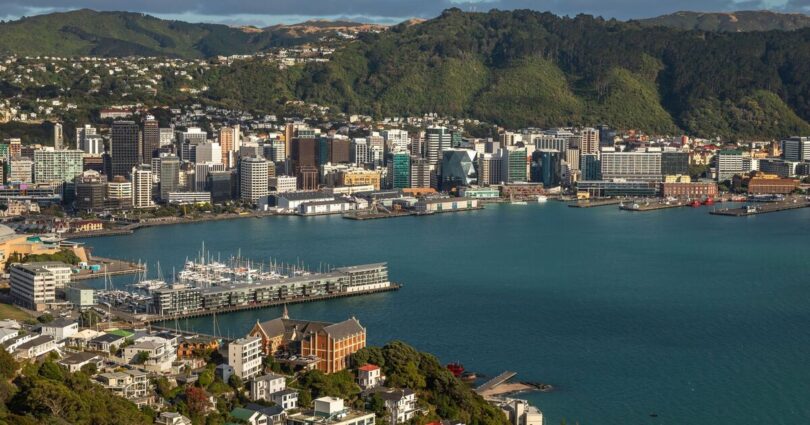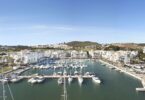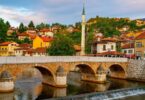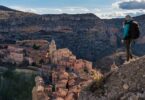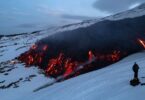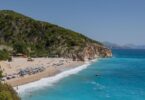Tucked away at the bottom of the world is one of the most magical capital cities where native birdsong echoes over the valleys, the wind whips the surf into white peaks, and the city hums with life.
This charming harbourside city is Wellington, New Zealand – also known by its Māori name of Te Whanganui a Tara.
Built up over towering mountains and into the dips of cool dark valleys, charming villas lie stacked atop each other looking over the lush green hillsides and sparkling blue ocean.
In the sea surrounding the city you can find seals, stingrays, dolphins and the occasional orca whale that drift past the coast.
I was lucky enough to call this little capital city home for just under seven years and one of the things I loved the most about my hometown was how small it is.
In the little flat I lived in, I could walk to the beach, the native forest, or the bustling inner city all within 15 minutes – there’s no need for a car when all this beauty lies at your doorstep.
If the buzz of everyday life got a little too loud, I would take myself on a walk up to Mount Victoria, which my lounge windows looked out over.
Famed for being one of the shooting locations for Lord of the Rings, in the iconic scene where Frodo and the hobbits crouch on the side of the road to avoid the Nazgul, this forest has plenty to offer those who explore it.
From the towering native trees to the spongy green moss and pine needles that line the floor, it is easy to imagine yourself just steps from the Shire.
There are walking tracks and mountain bike tracks, but you can lose yourself quite easily if you want to. For the young – or the young at heart – there’s playgrounds and slides, and if you take yourself to the summit of the mountain, there are jaw-dropping views out over the harbour and the inner city beach of Oriental Bay.
Oriental Bay is another jewel in the crown of this wonderful city. In the summer months I would pack my swimming costume and towel into my work bag and join the throngs of public servants who headed down to this white sand beach after work for a sunbathe and swim.
The beach is man made, and twice a year it closes in the lead up to summer to shift the sand brought in from Golden Bay in the south island town of Nelson.
Each year, an average of 1,900m3 (or 950 m3 biannually) of sand is moved at Oriental Bay beach. The sand is shifted by truck and pushed into place by a digger, so that the beach stays ready for the hundreds of people who enjoy it every day. The water is calm and warm, and if you’re lucky, you’ll see fish and stingrays drifting by as you float in the sea and look up to the hillsides that tower above the beach.
When it comes to wildlife, Te Whanganui a Tara is unbeaten.
Thanks to the tireless efforts of conservationists native birds now outnumber introduced species. Since 2011, there have been substantial increases in the average annual counts native birds. Kererū (native wood pigeon) populations have increased by 243% and kākā (a native parrot) have seen a 170% increase.
Birdsong can be deafening in New Zealand’s capital city, and only gets louder the closer you draw to Wellington’s bird sanctuary of Zealandia. This sanctuary is home to dozens of species of native birds as well as lizards, frogs and of course native trees.
But unlike many sanctuaries, this eco paradise isn’t tucked away at the back of the city: it’s right in the middle of one of its most affluent suburbs of Karori, just 10 minutes drive from Parliament. Pests are kept out of Zealandia by the efforts of rangers, and 5.3-mile (8.6km) predator-exclusion fence that encircles 225 hectares (556 acres) of land.
It’s tall enough to stop mammalian predators like ferrets and possums from climbing it, and a wire mesh wall that stops mice and weasels from getting through it. There’s even an underground skirt which prevents rats from burrowing beneath it.
The sanctuary is open to anyone and makes for a wonderful day of exploration through the forests and up to the dam at the rear of the sanctuary which offers sweeping views down over the valley.
But Wellington isn’t all birds and bees – there’s also a buzzing hospitality scene which has everything from live music, to craft beers to the best coffee in the world. A walk down Cuba street – the artsy semi-pedestrainised arterial vein of the city – will have you stopping every few feet to enjoy a new cocktail, beer or snack.
When I lived in Wellington, my friends and I would play a game we called the Cuba Street game. You start at one end and walk down: it’s five points for every person you see that you know, 10 if you stop and have a chat with them and 20 if you end up forgoing your plans to have a beer with them.
In the summer, you can’t go wrong with Rogue and Vagabond: a bar and live music venue with a wide open green park in front of it, dotted with pallet tables and beanbags for lounging in the sunshine – just make sure you pack your sunscreen, as the New Zealand sun is no joke.
If it’s a sweet treat you’re after, why not the favourite restaurant of Wellington’s Mayor, Tory Whanau? Whanau told the Express her personal favourite is The Ram – also on Cuba Street.
She said: “The restaurant has helped revitalise Wellington’s hospitality industry; always has a great, lively vibe; and has the best tiramisu in Wellington.”
Talking about her love of the city, Whanau said it is unique.
“Our compact, walkable city centre is nestled between a stunning harbour and rolling hills, offering breathtaking views and easy access to outdoor activities, particularly walking and hiking.
“If you’re looking to escape the British winter, come and discover Wellington.”
Source link

